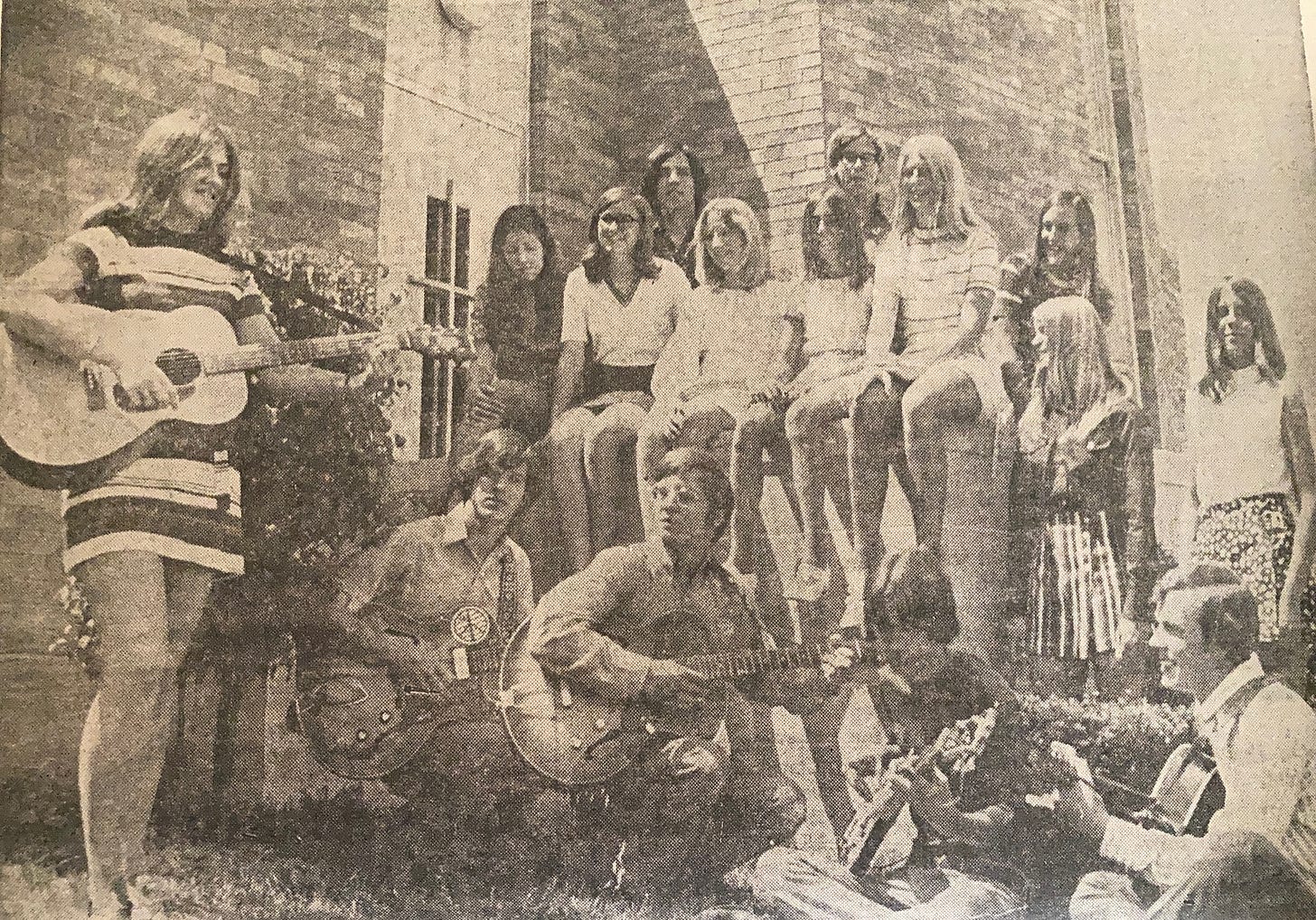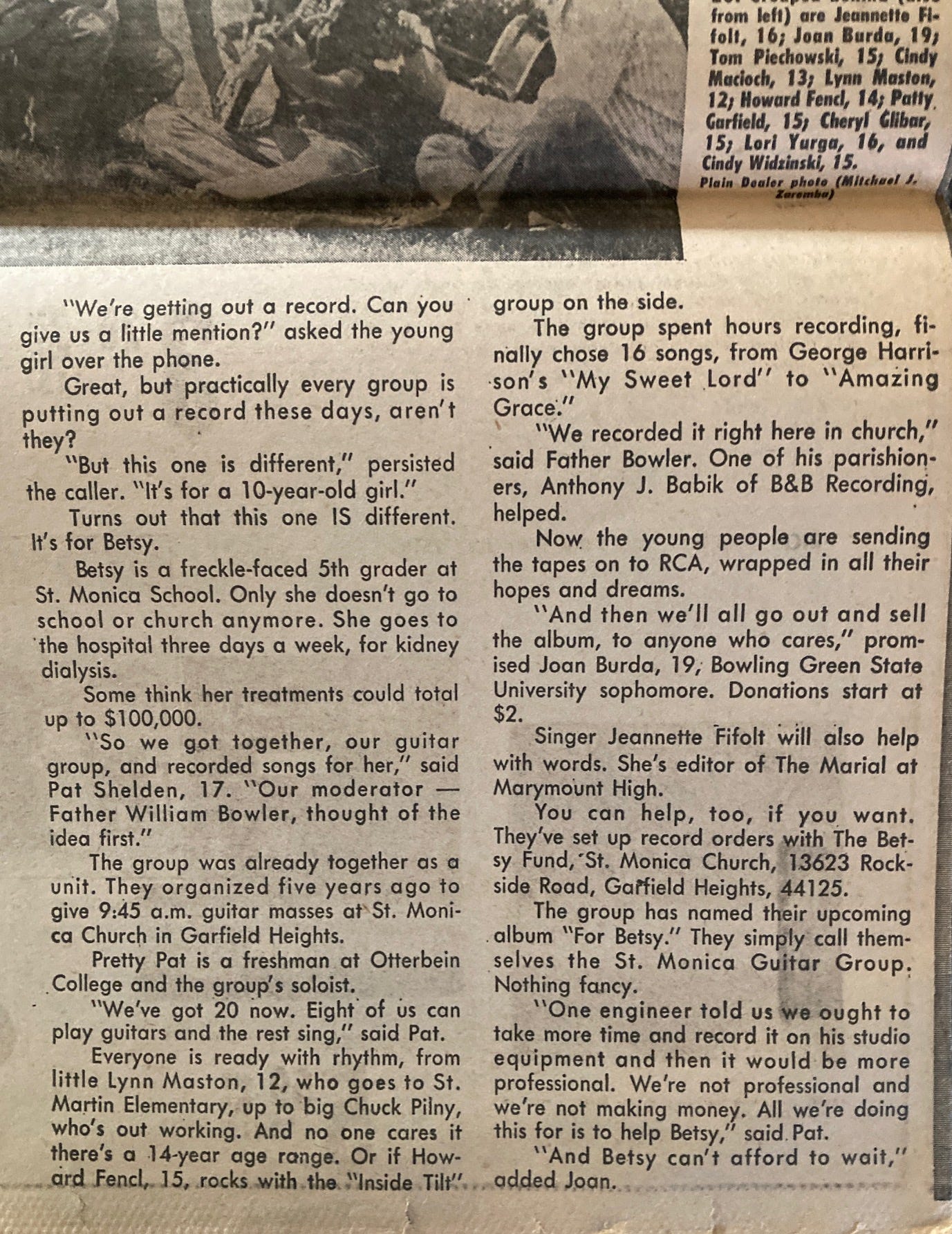The Utter Glamour of Studio Recording
Stevie Nicks likely did not need to smuggle a toilet brush into Fleetwood Mac's studio
Invariably, it’d be a stifling 90-plus humidity-dripping degrees in there every week, and once again I’d be wedged between massively corpulent adherents, one reeking of too much cheap perfume and sweat, the other bellowing great clouds of salami breath with every aloud prayer response and hymn.
It was the microclimate of my discontent — Sunday mass in 60’s suburbia — and I knew I had to get out.
But since regular church attendance was a parental forced march, there was little I could do but suffer. Until the Second Vatican Council okayed guitar mass.

The guitar group that ensued finally came to the rescue and sprang me from that pew. By 1971, I already had seven years of Mel Bay-inspired guitar lessons under my belt — worthless when you want to rock and all you’re learning is “Red River Valley” and “My Old Kentucky Home” — but apparently good enough for guitar-based liturgy.
The guitar group also got me into a professional recording studio for the first time. We were somehow recruited into a fundraising effort for Betsy, a 10-year-old fellow parishioner who needed expensive kidney dialysis three days a week. No one in our dead-end suburb could afford much of anything in those days, and Betsy’s family was looking down the barrel of $100,000 in medical bills (that’s 1971 dollars, equivalent to $755K today).
So we recorded an album’s worth of the stuff we played in church to sell to the congregation in an effort to help Betsy.
I don’t remember the initial recording, which I think was tracked live at the church with all of us sawing away at our guitars, but serendipitously, a few of us were asked to provide some additional vocal and guitar work at a studio called “S.I.R. Recording” in downtown Cleveland, Ohio. It was a tiny storefront operation that has since vanished from the face of the Earth and is entirely absent from even the most scrupulous Boolean Google search.
It was the pinnacle of my 14-year life. I’d be going to an actual recording studio, the kind of place that “Sticky Fingers” and “Killer” came from that year.
I was pretty sure this was it — surely, this would get me out of Garfield Heights.
It didn’t. S.I.R. Recording turned out to be a bit of a dingy closet, to my recollection. But an engineer there taught us about overdubs and had us record a few. Hearing the playback with multitracked overdubs added to the mix was like magic.
When we wrapped, the engineer used a cutting lathe to kick out acetate pressings of the guitar group LP. Wow. I floated out of that studio with an honest-to-goodness copy of an album I played on.
Someone convinced the iconic Cleveland Plain Dealer rock critic, Jane Scott, to write a blurb about the record and our guitar group — an article I recently unearthed:

I wouldn’t see the inside of a recording studio again for three years. But in 1974, the band I played in (which essentially was PZB, whom you met in my “Students On the Go” post, but with a lead singer) had saved enough shekels from our live gigs to afford a few hours of expensive studio time in the legendary Agency Recording Studios in downtown Cleveland. The Big Time. We were freshly-minted 17-year olds.
We tracked up two songs I had written. One of the tunes, “We Can Go Beyond,” was an adolescent attempt to emulate Yes, a band whose musicianship Bob and I hero-worshipped. Bob’s drumming was partly inspired by Yes drummer Bill Bruford — the vamp into the song’s bridge knocks off some of Bruford’s drum licks in the “Total Mass Retain” movement of Yes’ “Close to the Edge” (Listen about :31 into the track). Remember, we’re 17. You can also hear Bob and me doing the background 2-part harmonies throughout — a harbinger of our later work:
I was pretty sure this was it — surely, this would get me out of Garfield Heights.
It didn’t, but together with the 1971 S.I.R. recording experience, it did give me some studio chops that would come in handy when we returned to Agency as PZB in 1980, and then again when Bob and I re-grouped as Boho Zen starting in 1999.
Once, at a posh Cleveland studio, to my astonishment, I was actually offered a mocha latte and a raspberry croissant by a chirpy intern during a client session for the PR agency at which I worked. I was so flummoxed, given the other studios I’d worked at with dirty heirloom shag carpeting, subterranean ladder-only access and questionable, odoriferous toilet facilities, that I had to politely decline.
Oh, about that studio with the horrifying toilet — after a couple of sessions staring down that blackened porcelain thing, I smuggled a toilet brush and some Comet cleanser in my effects pedal gig bag and cleaned the thing myself. I was armed with a 2000 Flushes automatic toilet bowl cleaner tablet as well, which I dutifully plonked into the toilet tank.
The bathroom in question was adjacent to the control booth.
“Do you guys smell something? Like paint thinner?” asked one of the studio staff, suspicious now.
“Uhh…nope.”
It remains, without question, my favorite studio.
In the end, as long as the room is acoustically friendly (a “good room,”) and you’re lucky enough to have a gifted engineer, when the red “RECORD” light goes on, it doesn’t matter which studio you’re in. Because as soon as that red light blinks on and it’s “go” time, it’s all on you, baby.
NEXT TIME: My track, “Girl Got Shimmy,” e. e. cummings, Bob, Neil Zaza and me. Here’s a preview:
“We Can Go Beyond”
by Fencl/Racic © 1974




